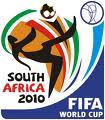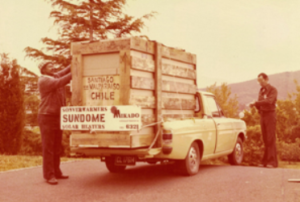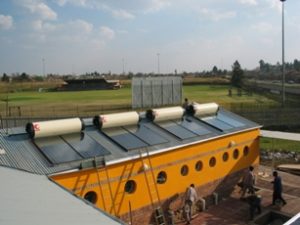South Africa: Freezing Cold destroys several 100 Solar Thermal Systems
July 19, 2010
 In the middle of June, during the World Cup in South Africa, the significant drop in temperature around Johannesburg did not only cause some football players to catch a cold in the meantime, but one of these frosty winter nights also destroyed several hundred solar systems in the region.
In the middle of June, during the World Cup in South Africa, the significant drop in temperature around Johannesburg did not only cause some football players to catch a cold in the meantime, but one of these frosty winter nights also destroyed several hundred solar systems in the region.
Source: http://de.fifa.com
How did this happen? Several system suppliers, mostly newcomers in the sector, sold and installed open loop systems (also called direct systems) in an area which is known for its harsh winter conditions. When the temperature at night dropped below zero, the water in the collectors started to freeze. The system’s copper pipes broke and the collectors were severely damaged.
This story might create a “déjà-vu” for long-term professionals in the sector, because Kwikot, the market leader in geysers in South Africa, struggled with exactly these kinds of problems 15 years ago. “We lost a lot of systems back in 1985 in a strong freezing winter night,” Hendrik Malan, Head of Production at Kwikot, recounts. As those losses occurred within the warranty period, the company reimbursed customers and later abandoned its solar thermal business back. Today Kwikot is back in the solar thermal sector and one of the biggest suppliers.
Long-time South African solar system suppliers are aware of the danger of direct systems freezing in cold winter times. For example, collector manufacturer Solardome or importer Solar Heat Exchangers only deliver indirect systems with glycol in their solar circuit. “We have witnessed several freeze protection mechanisms being tried over the years, but the majority have failed,” Dylan Tudor-Jones, Head of Solar Heat Exchangers, explains.
He describes what happened in Johannesburg already some weeks ago: System suppliers used dumping anti-freeze valves, which meant that if the water drops below a certain temperature, the valve opens and draws hot water from the cylinder and releases it via the collector. If this is done several times during the night, the water in the absorber pipes will not freeze. “These systems are quality-checked and tested and have a reputation for working well in mild frost areas or if the temperature drops slowly,” says Tudor-Jones. “The extreme freeze, which we experienced in this particular night in Johannesburg, happened so fast that one can only assume the valves did not open. However, the true reason is yet to be determined”.
And what can costumers, who lost their solar water heaters, expect now? In a first step, the respective system suppliers paid plumbers to check each affected system, isolate the geysers from the leaking solar panels and make sure the house owners receive the hot water produced by the electric element back-up. The system suppliers also advised their clients to notify the house insurance companies of the damage, in case there is a valid claim to be made thereafter.
And who pays for the damage? Most insurers probably will not, because the installed technology was not suited for the region and the systems still had their warranty. The system’s supplier will have to replace the damaged direct systems with technology, which is capable of withstanding the region’s weather conditions. The resulting financial losses will bring some of the system suppliers in deep trouble. “We are trying to help,” Tudor-Jones, who also chairs the Solar Water Heating Division at the Sustainable Energy Society of Southern Africa (SESSA SWHD), says. If affected clients are not reimbursed, the image of the solar thermal industry might be in danger as well.
More information:
http://www.sessa.org.za
http://www.kwikot.co.za
http://www.solarheat.co.za


